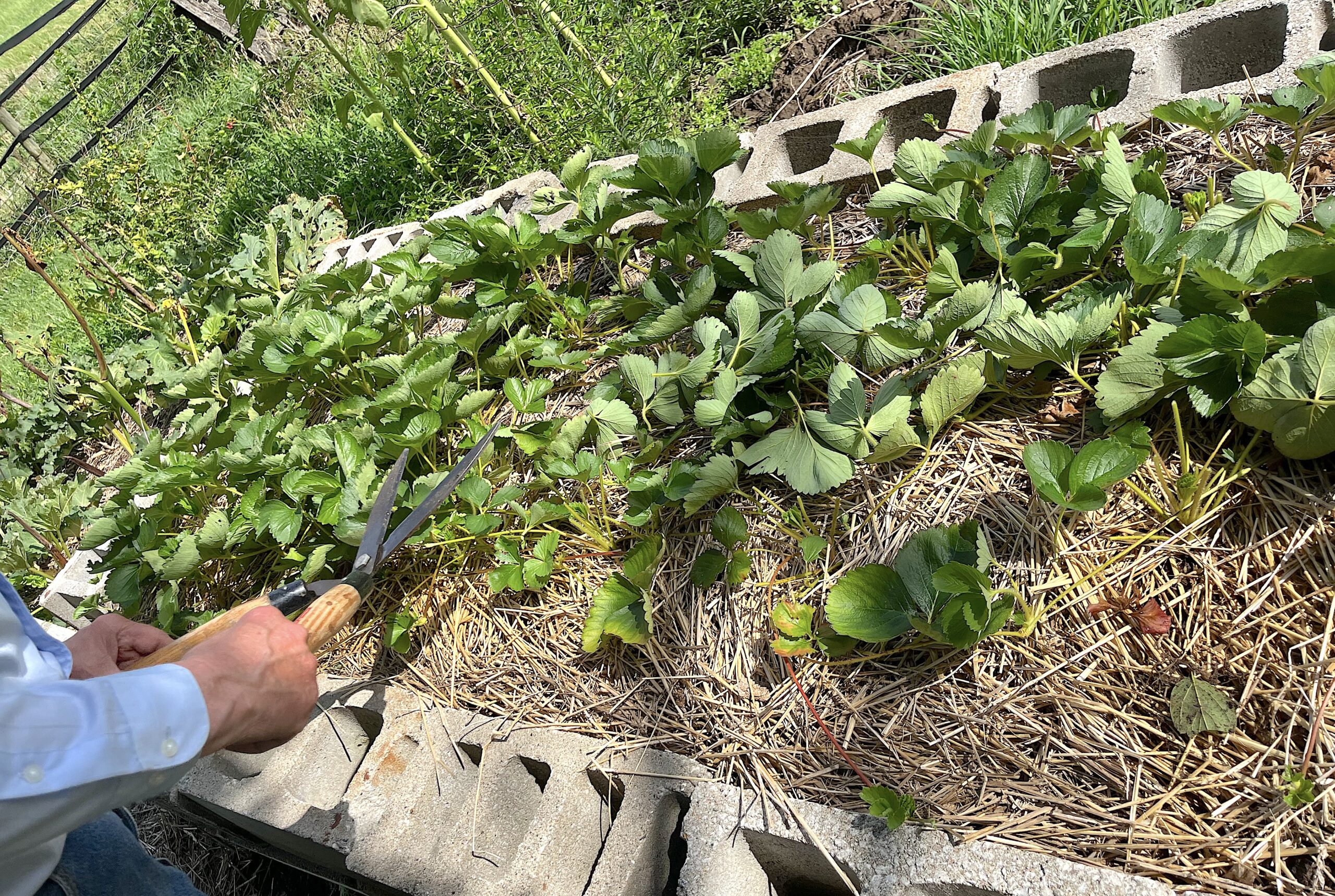The Hort Report: If June-bearing strawberries are done producing, get them ready for next year

Hope everyone had a great Fourth of July. Many of you should be getting a lot of produce from your gardens. Cool-season vegetables have been harvested, and warm-season vegetables are producing.
Think about what vegetables and where you will be planting them in your fall garden. You can start planting fall garden vegetables in late July. Make sure to have your garden spot ready.
About two to three weeks after your June-bearing strawberries are done producing, get them ready for next year.
Cut your plants back to allow them to begin producing new growth. This prepares them for fruiting next year. Growing new growth also helps protect them from the cold winter weather.
There are a couple of ways to cut back strawberries. One is to mow them off with a push mower. You don’t want to mow them short like a yard. If mowing too short, you might damage the crowns of the strawberry plants.
Some people will use a string trimmer to prune back their strawberries. Don’t prune too low to the top of the plant. In our raised strawberry bed, I use hedge trimmers. This way I can take my time and go slow.
Prune your strawberries after they have finished blooming for this year. Don’t want to wait until late summer or early fall. When pruning this late in the year, you can hurt the strawberry plant for producing next year.
When you wait too late to prune them back, the plants won’t grow back enough foliage to protect them from a hard cold winter. This also will keep the plant from creating and storing up energy for producing new fruit.
If you don’t get any pruning done on your strawberry plants shortly, wait until next year.
If you have everbearing strawberries, don’t try to prune them during the summer months. Prune them some in the fall if the strawberries are getting too big. Don’t over-prune, as they won’t have time to grow back foliage before winter.
Fertilizing both June and everbearing strawberries is important during the summer. Fertilizing after harvesting strawberries and pruning your strawberry plant will help the plant recover faster. This also helps the strawberry plant store energy for next year’s strawberry crop.
People don’t often think about fertilizing their strawberry plants at this time of year. I use Ferti-Lome Bloom and Root Fertilizer. It has a 9-58-8 ratio mix of nutrients — 9 percent nitrogen, 58 percent phosphate and 8 percent potash. This water-soluble fertilizer helps to build the female parts of the plant. Making healthier roots and foliage helps strawberries through the winter months.
Strawberries now will be producing runners. These runners will become new strawberry plants that will produce strawberries the next year for you to harvest. I train runners to fill in places where I don’t have strawberry plants growing.
Strawberry plants produce strawberries for four to five years before they start to decline in production. Training runners is important to keep your strawberry patch going.
Keep strawberries mulched and watered during the summer months after pruning them. I will fertilize strawberries a couple of times a month after watering them. Don’t over water. This might create root rot. The mulch will help keep weeds down and conserve the water that you are using on them. If you do get weeds in the mulch, they are easier to pull.
Scout for all types of insects on your vegetables, fruit trees, grapes and berries. The best time to do this is when you are watering and weeding.
I appreciate all your questions in the past and look forward to them in the future. Please keep them coming. Call me at 573-588-2040 at Shelby County Implement in Shelbina, Mo., contact me by email at sci63468@hotmail.com, on Facebook at Greenwell’s Greenhouse Group or ask me anytime you see me.

Pat Greenwell is the owner of Shelby County Implement in Shelbina, Mo. He was a high school agriculture teacher for 11 years. He has taught adult vocational agriculture since 1987. He also is a research assistant at the Truman State University Ag Department Farm.
Miss Clipping Out Stories to Save for Later?
Click the Purchase Story button below to order a print of this story. We will print it for you on matte photo paper to keep forever.

